Are toasties the ultimate comfort food? For me, they have to be in the top three at the very least. Toasties mean late nights or early suppers; they mean eating in the kitchen, standing up, or sitting on the sofa, probably in your pyjamas; they mean picking the little bits of escaped melted cheese from the pan before you plate them. They mean waning hangovers and catch-ups with close friends; they mean solitude and they mean company; they mean ease and speed, a direct route to something crisp and hot and oozing. But crucially, toasties are completely delicious. They don’t rely on nostalgia (although I have plenty of nostalgia for them) to deliver their comfort, they aren’t bland nursery food, or esoteric family favourites. Toasties hold their own.
When I was little, Sunday night suppers were Dad’s domain, and that meant toasties. He used to make them in a Breville sandwich maker, creating those distinctive triangular toastie pockets, encasing tomato and cheese that was still hotter than the sun by the time it reached your mouth. My sister and I would nibble our way around the crusts, leaving the softest, cheesiest bit of each bit until last. If Dad was trying to mix it up, we’d have corned beef and onion toasties, for which I still have a soft spot, or – Mum’s favourite – toasted sandwiches filled with tinned chicken curry. When I was at university, perhaps in a bid to recapture a bit of the home I missed, I used to make truly awful cheese and salami toasties in the microwave, the only facility available to me. Even the worst toasties are kind of great, but the best are unbeatable. Here are some tips to make yours sing off the plate:
1. Use mayo, not butter
So how do you make a really good toastie? When Dad was in charge of toasties, the received wisdom was that you had to butter the outside of the bread to achieve a bronzed finish. But times have moved on (sorry, Dad), and many toastie aficionados will happily bore you senseless talking about the benefits of using mayonnaise instead. I learnt this from Gabrielle Hamilton, chef and owner of Prune in New York, but it’s now widespread. Mayo spreads more easily than butter, stopping the bread from tearing; it also has a higher smoking point that butter, so won’t burn as easily, and the combination of eggs and oil in the mayonnaise will create a golden, crisp exterior that won’t stick to the pan or machine.
2. Compress to impress
When it comes to kit, what you really want to achieve is compression and sustained heat, so that the cheese melts, and the whole sandwich becomes cohesive and sort of squished. Sadly not being the proud owner of a panini press, I like using a George Foreman grilling machine for my toasties, finding that they compress the sandwich, and create an excellent crust on the outside, but in absence of that, a thick-bottomed frying pan combined with a heavy weight on top of the toastie will do the same.
3. White bread is your friend
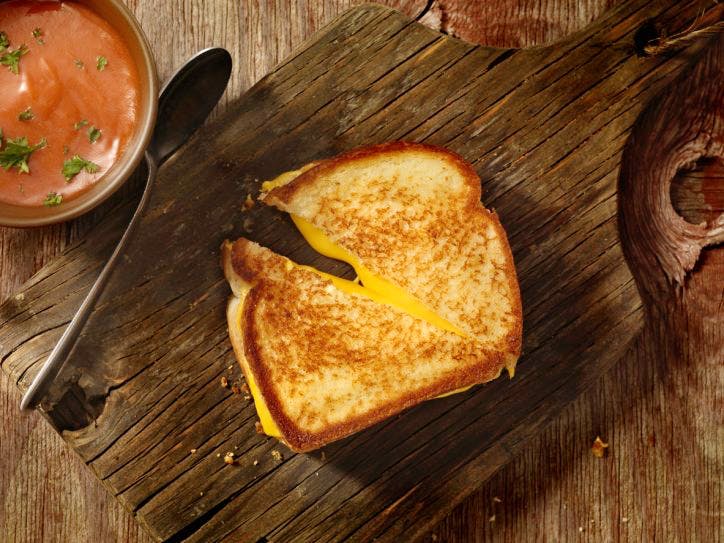
Although terribly trendy, sourdough can be a tricky bread for a toastie: the crust is too crusty, the crumb too chewy. While it appears to offer structural integrity, it’s very difficult to actually eat. Instead, you want something a little thinner, a little more yielding. While a soft white sliced loaf will always have my toastie heart, most bloomers and granary loaves will work well, as will paninis (obviously) and ciabattas. If you’re missing your local hipster caf, where sourdough is obligatory, then cut the slices thinner than your would for toast, ensure there’s a generous proportion of filling to bread, and really go wild when you’re spreading it with mayonnaise.
4. Gruyere is a great alternative to cheddar
And what about the star of the show, the fillings? Sometimes, the simplest is the best: it’s hard to beat a cheese toastie, ideally with a punchily-flavoured cheese that melts well. A sharp cheddar is great, the more mature the better, in my book. Of course, not everyone wants to use a cheese that will give you forehead sweats (they’re wrong, but there’s no accounting for taste): if you do you want something a little mellower but seriously stringy, try gruyere. Add sliced ham, tomato or onion to the cheese to remain in ‘toastie textbook’ area. Tuna ‘melts’, the preserve of cafes and student common rooms, are a classic for a reason, but benefit from crunch amidst the mushy filling: chopped cornichons or red onions will add interest.
5. Go global
It might be pushing it a bit to say you can travel the world through toasties while we’re all stuck at home, but there are at least a whole host of global toasties to choose from. Italian is straightforward: brilliantly elastic mozzarella is great with sliced tomato, basil and pesto, or if you want to feel like you’re sitting in a French bistro try my croque monsieur, which uses a bechamel sauce in the filling. Cubanos, toasted sandwiches originating in Cuban-immigrant communities in Florida in the nineteenth century, is a ham and cheese toastie on steroids, with swiss cheese, pickles, mustard, and a whole bunch of different hams and salami inside. A New York favourite, the Reuben, is a combination of American-style corned beef, cheese, sauerkraut and Russian dressing, served on rye bread. Or try Diana Henry’s Mumbai street food-inspired chilli-cheese toastie.
But what if you fancy steering away from toastie stereotypes, trying something a bit different? If you want to go high-end, try Quo Vadis chef and proprietor Jeremy Lee’s famous smoked eel and horseradish sandwich. Meera Sodha’s vegan potato masala toasted sandwich makes the most of frozen veg and spice (and even uses the potato peelings to make homemade crisps).
6. Three cheers for chutney
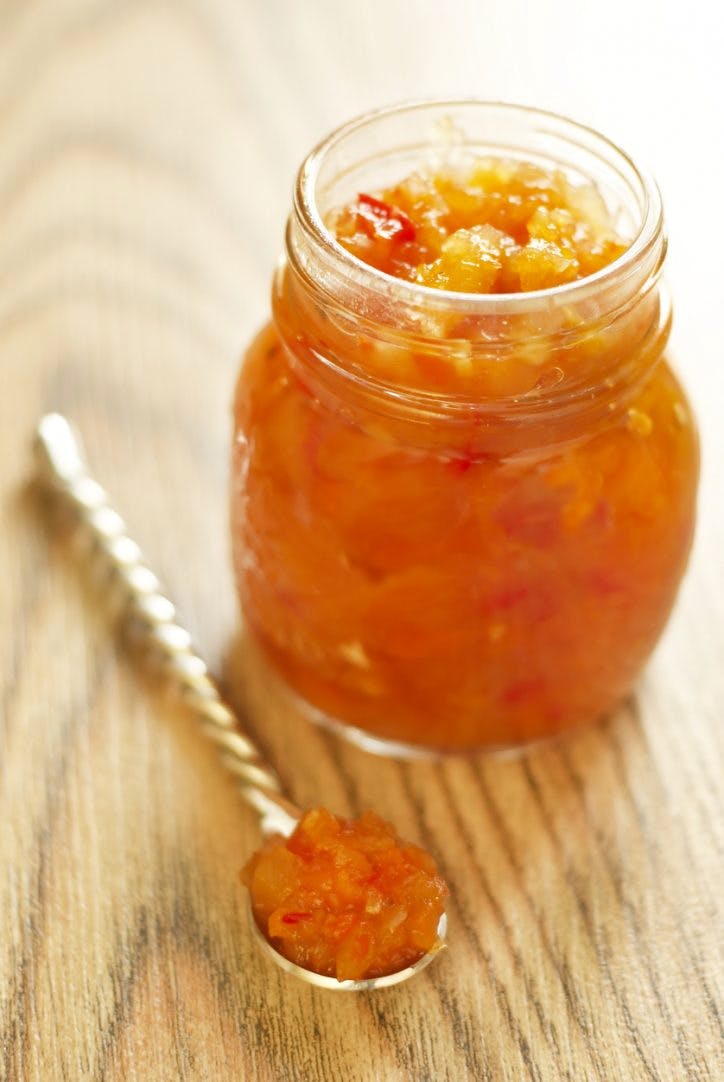
Condiments can make or break a toastie – and they can pull a distinctly mediocre toastie back from the brink. Mango chutney or lime pickle will bring to life any drab sandwich, and a slick of mustard or horseradish make cheese taste cheesier, and can ressurect tired or dry meats. If your fillings are salty, introduce something: sweet chilli jam or redcurrant jelly left from a roast work well, and quince jelly and sharp cheese are as good a pairing in a sandwich as when they sit on a cheeseboard.
If you’re looking to transform your toastie in something a little more regal, Jamie Oliver makes a toastie fit for a king, with his cheese crown finish, taking those little bits of cheese that fall out of the sandwich and sizzle on the side, and making them the star of the show.
And if that’s got you salivating, here are four recipe ideas from the Yorkshire Creamery to try at home:
Yorkshire Cheddar, Red Onion & Hendersons relish toastie
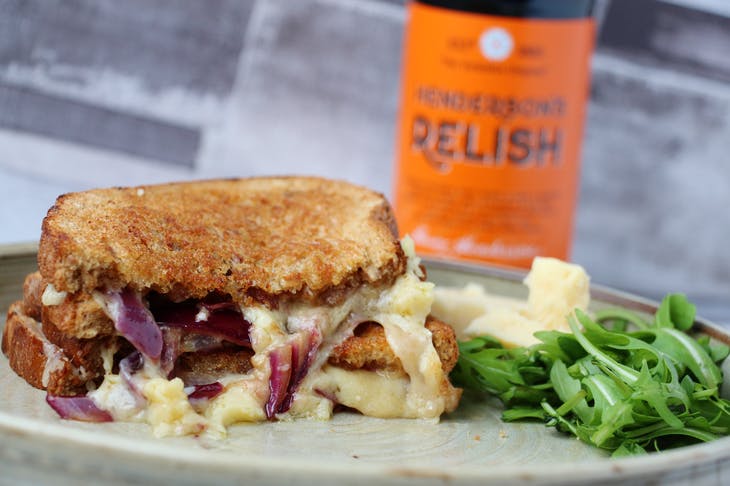
Ingredients
2 slices thick white bread
1 sliced red onion
50g grated Yorkshire Cheddar
2tbsp Yorkshire Butter
Splash of Henderson’s Relish
Method
1. Finely slice the red onion
2. Grate the cheese
3. Butter the bread
4. Build the sandwich, with the buttered side of the bread facing outwards
5. Heat a non-stick frying pan to medium heat
6. Add the sandwich, butter side down, put a lid on the pan, then allow the toastie to cook for 2 minutes
7. After 2 minutes, flip the sandwich and replace the lid – cook for a further 2 minutes, or until the bread is browned and the cheese melted
8. If you need to allow any additional time to allow the bread to brown – just flip it back and allow it to cook to your liking
Ploughman’s Toastie with Yorkshire Red (ham, cheese, pickles)
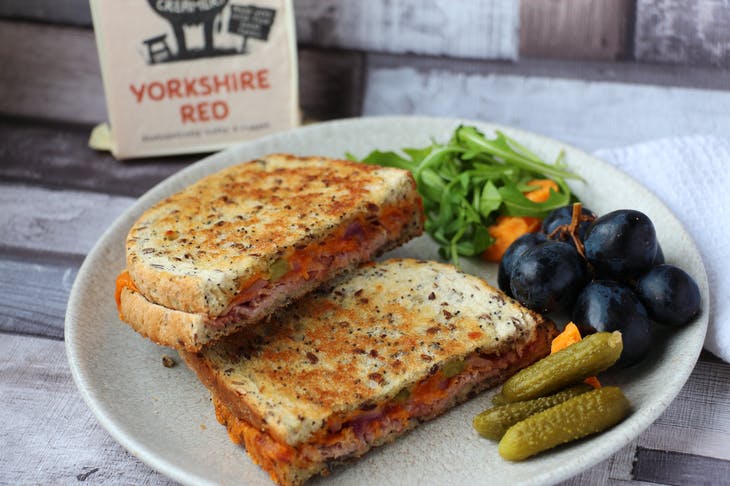
2 slices of thick white bread
2tsp of Yorkshire Butter
50g of thinly sliced Yorkshire Red Cheese
1 slice of Ham
1tbsp of Pickle
1 sliced Gherkin
Instructions:
1. Preheat a frying pan over medium-high heat.
Spread one side of each slice of bread with 1 tsp Yorkshire Butter.
Spread the pickle on one side of the bread and top with ham and the cheese the place the other slice of bread butter side up.
Place butter-side down in the hot frying pan. Cook until the sandwich is golden brown and the cheese is melted, about 3 – 5 minutes per side.
Top with a sliced gherkin and enjoy!
Mac and Yorkshire Cheddar Cheese Toastie
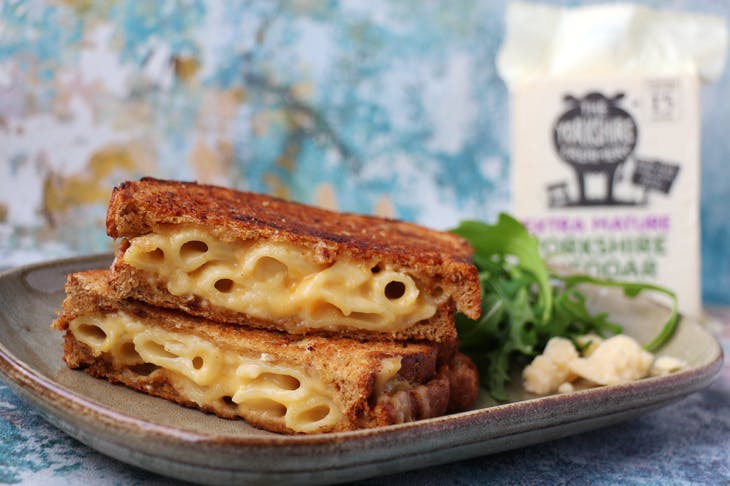
Ingredients
150g macaroni pasta
25g plain flour
25g Yorkshire Butter
300ml milk
150g grated Yorkshire Cheddar
8 slices white bread
Yorkshire Butter, for spreading
Method
1. Prepare the macaroni cheese: Cook the pasta 2 minutes less than on the pack, then drain and put to one side.
2. In a small saucepan, add flour and Yorkshire Butter. Cook for a few minutes until golden brown. Pour in the milk in stages, starting with a small amount, whisking vigorously each time. Once all the milk has been incorporated, cook for 5 minutes, stirring constantly. Add in the grated cheese and stir until it’s melted and bubbly. Add cooked pasta and stir it all together.
3.Making the toasties:
Step 1: Heat your toastie machine or frying pan.
Step 2: Butter each slice of bread on one side.
Step 3: Put a slice of bread, butter side down, on the hot plate and add a large spoonful of macaroni cheese.
Step 4: Top with another slice of bread – butter side up and close the toastie machine.
Step 5: Cook for 3 minutes then carefully open the machine – cook for a minute or 3 longer if needed, so the bread is well cooked and golden brown.
Step 5: Repeat to make as many toasties as you like – but let them rest for a few minutes before serving as the filling will be scorching hot!
Yorkshire Red Cheese, Ham and Pineapple and Cheese Toastie
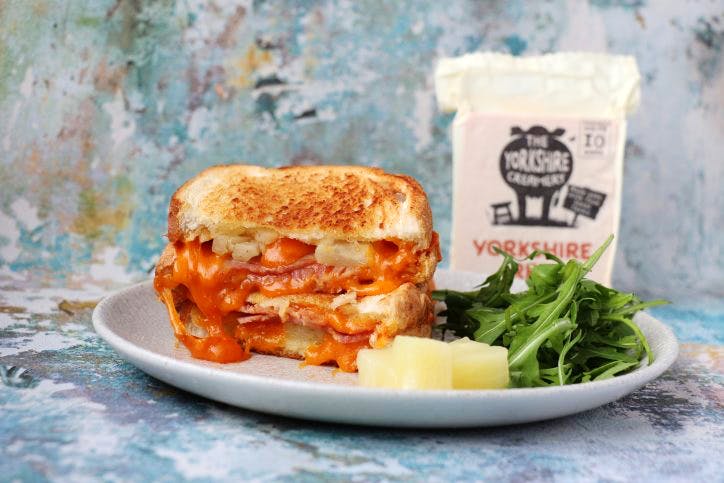
Ingredients
Serves: 4
3tbsp Yorkshire Butter
8 slices bread
2 slices ham
200g Yorkshire Red cheese (thinly sliced)
1 small tin pineapple, drained and finely chopped
Instructions
Heat a large frying pan over medium-high heat.
Spread Yorkshire Butter onto one side of each slice of bread.
Place up to 4 of the slices of bread, butter side down in the pan.
Top each piece with one slice of cheese, a slice of ham and about 2 tbsp of the chopped pineapple.
Place remaining slices of bread on top with the butter side up. When the bottom of the sandwich is golden brown, flip sandwiches, and cook until browned on the other side, about 2 – 3 minutes.
Repeat steps with remaining ingredients if all four sandwiches do not fit in your pan.

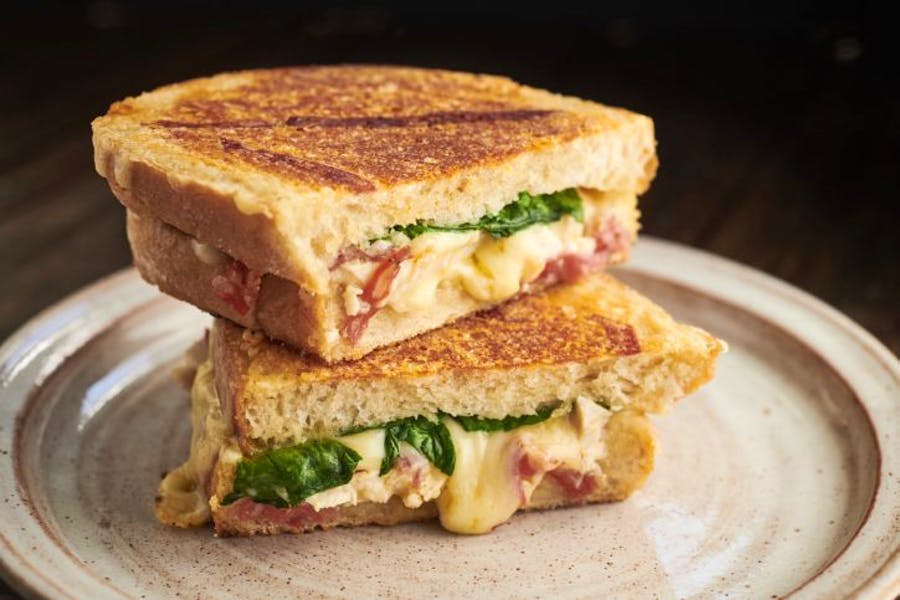




Comments